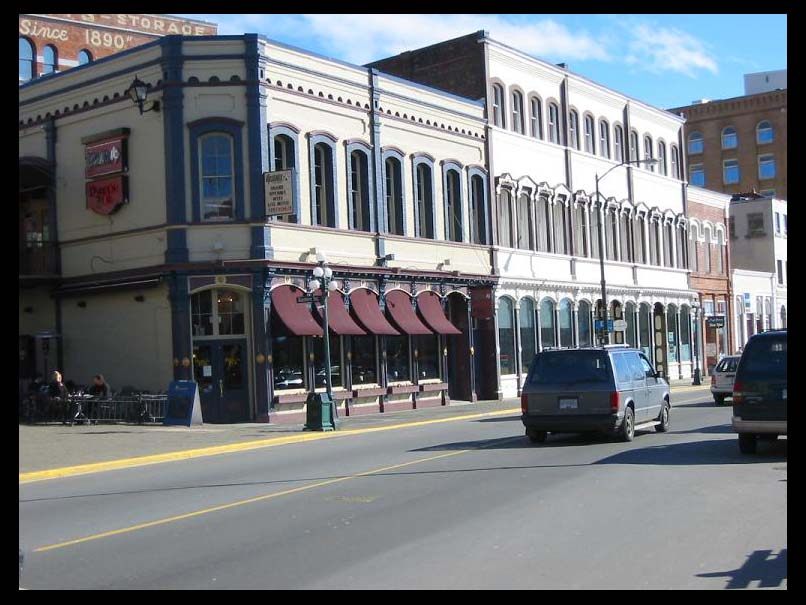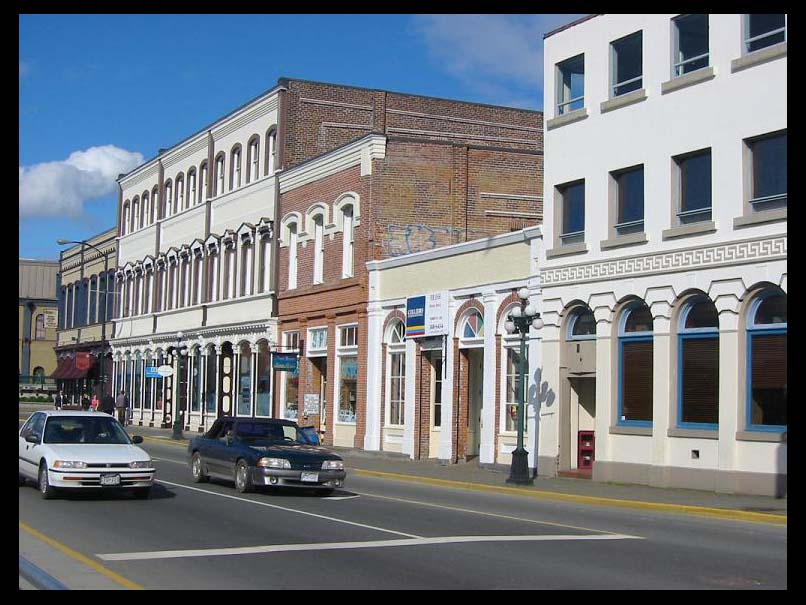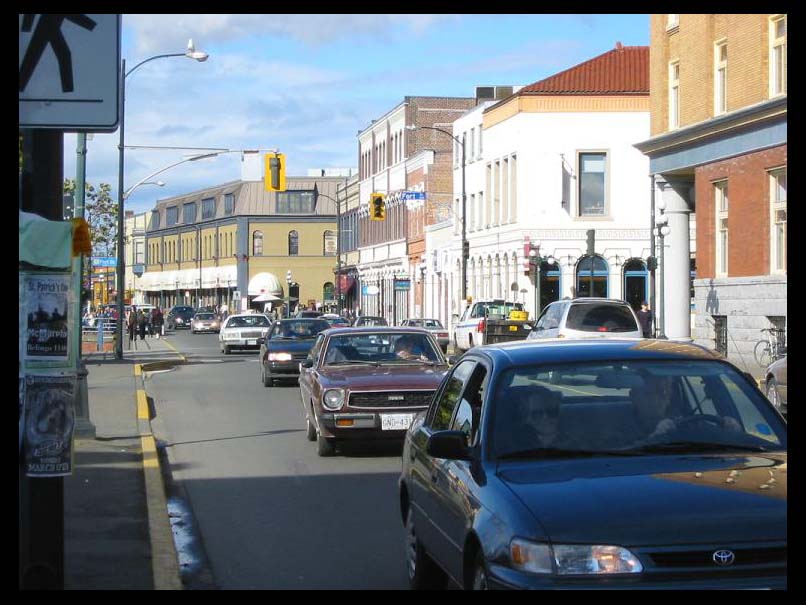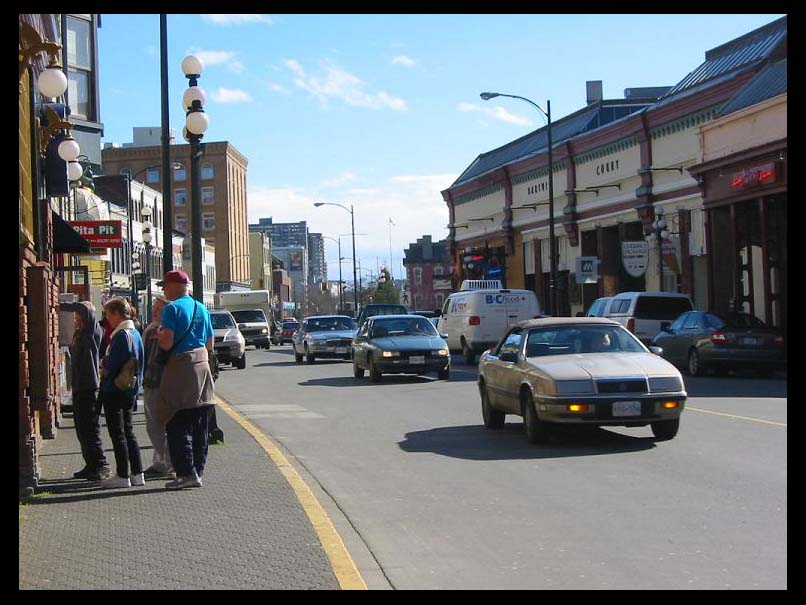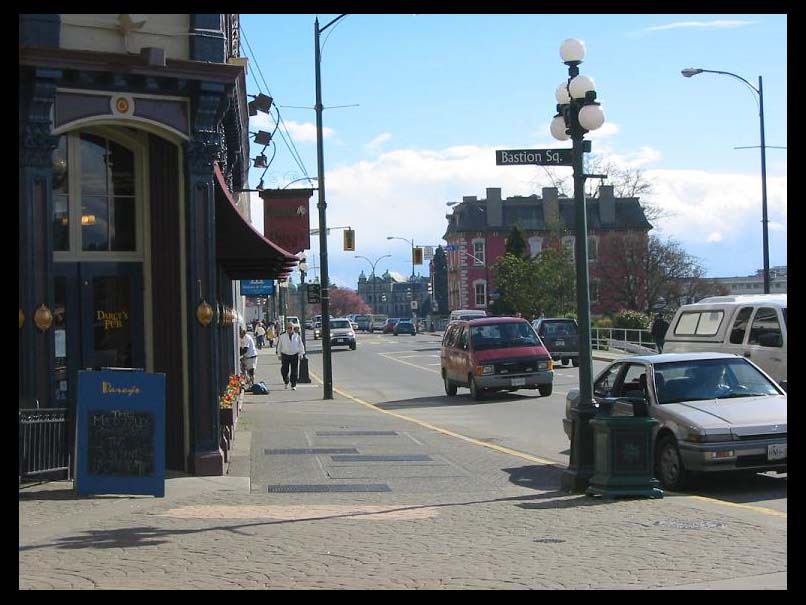Historical Background of Victoria
General Progress on Wharf Street
List of Wharf Street Businesses
Conclusions
From 1843 to 1881, Victoria, British Columbia underwent a series of dramatic transformations. In less than forty years Victoria changed from a small fur trading outpost on the westernmost reaches of the country to the economic and political centre of the province of British Columbia. An examination of Wharf Street in 1881 not only provided insight into the nature of commercial life in Victoria during this time, but also highlighted many of the important changes that occurred in British Columbia and Victoria since the establishment of the Hudson’s Bay Fort. Many traces of the history of the province and Victoria are embedded in the history of this one city street.
Wharf Street grew with the rest of the city and over time expanded along the city’s waterfront to include a greater number and variety of businesses. The wholesale and commercial nature of the district in 1881 is indicative of the prosperity and growth experienced in the city during the boom period of the gold rush and to the increasing demand generated by the large influx of settlers. A change in architecture from the small wooden buildings of the early gold rush period to larger brick and stone structures built from the 1860s onward signifies increased investment and permanence, and indicates confidence in future development and prosperity of the commercial district and the city. American influence brought by the gold rush is present in the architectural style of many of Victoria’s oldest buildings and the British colonial heritage of the area is demarcated by the English backgrounds of many of Victoria’s most prominent business owners. Furthermore, British Columbia’s status as a Canadian province was clearly defined by the prominence of the Customs House on Wharf Street.
Wharf Street is unique in that it was the first impression of Victoria presented to prospective settlers and investors. Based on the reconstruction of Wharf Street in 1881, the image that the city and business owners were attempting to convey was one of prosperity and opportunity. Moreover, the prominence and grandeur of the Customs House was a clear indication to those arriving that the city and province were under Canadian authority and law.
While Victoria lost much of its economic importance with completion of the Canadian Pacific Railway in 1885, and the growth of the city of Vancouver as the province’s economic centre, Victoria still remains the political capital of the province. Wharf Street continues to change with the city and is now reflective of Victoria’s significant reliance on the tourism industry. Wharf Street is frequented by many of Victoria’s tourists and houses restaurants, shops, as well as law and government offices. Many of the buildings present on Wharf Street in 1881 have been preserved through heritage designation and serve as reminders of the excited days of the gold rush and the development of the street as the city’s commercial district during the nineteenth century.
Wilson & Proctor Building - 2003
Rithet Building - 2003
View of Wharf Street from Broughton Street - 2003
Foot of Yates Street Looking Down Wharf Street - 2003
Wharf Street from Bastion Square - 2003
